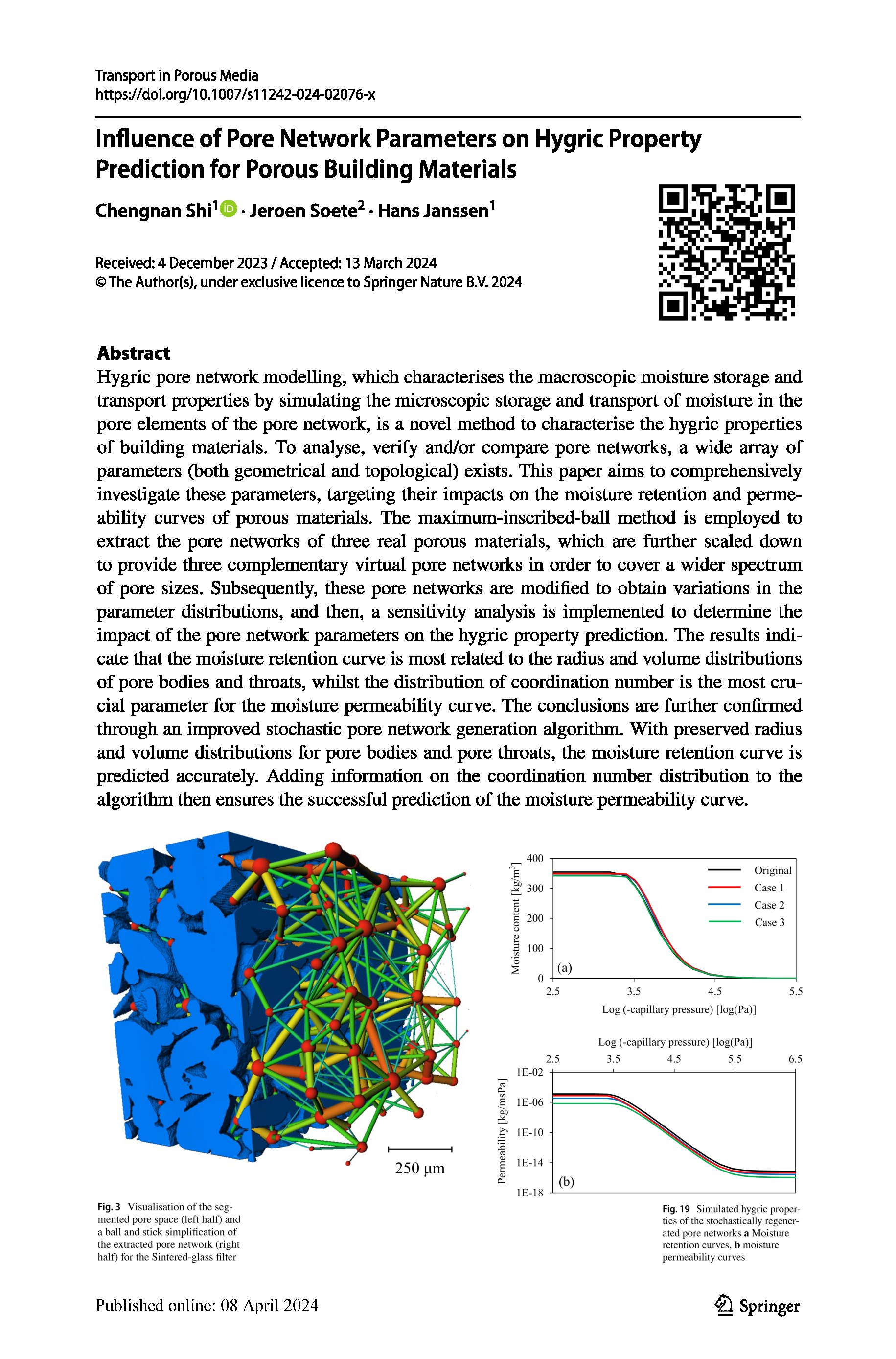 Abstract
Abstract
Hygric pore network modelling, which characterises the macroscopic moisture storage and transport properties by simulating the microscopic storage and transport of moisture in the pore elements of the pore network, is a novel method to characterise the hygric properties of building materials. To analyse, verify and/or compare pore networks, a wide array of parameters (both geometrical and topological) exists. This paper aims to comprehensively investigate these parameters, targeting their impacts on the moisture retention and permeability curves of porous materials. The maximum-inscribed-ball method is employed to extract the pore networks of three real porous materials, which are further scaled down to provide three complementary virtual pore networks in order to cover a wider spectrum of pore sizes. Subsequently, these pore networks are modified to obtain variations in the parameter distributions, and then, a sensitivity analysis is implemented to determine the impact of the pore network parameters on the hygric property prediction. The results indicate that the moisture retention curve is most related to the radius and volume distributions of pore bodies and throats, whilst the distribution of coordination number is the most crucial parameter for the moisture permeability curve. The conclusions are further confirmed through an improved stochastic pore network generation algorithm. With preserved radius and volume distributions for pore bodies and pore throats, the moisture retention curve is predicted accurately. Adding information on the coordination number distribution to the algorithm then ensures the successful prediction of the moisture permeability curve.
